| Home Travel Index | First Posted: May 24, 2011 Jan 21, 2020 | |
Warsaw, Auschwitz, Krakow, Budapest, Vienna, Prague, and HelsinkiGalleries:Doors of Warsaw, Auschwitz, Krakow, Budapest, Vienna, Prague, and Helsinki Nazi Concentration Camp (Auschwitz) Horses, Horse Statues and Horses in Art in Warsaw, Auschwitz, Krakow, Budapest, Vienna, Prague, and Helsinki A bit of Finland Creative and Fun! Restaurants Along the Way Before you read this itinerary I want to warn you that pickpockets and purse snatchers are rampant in Hungary and Prague. One traveller in our group had her purse snatched, by two men working together, in the lobby of the Scandic Hotel (Hotel Grand Marina. The couple were sitting with a group waiting for the airport coach to arrive. This was a bold and aggressive act! That was in Helsinki! Do NOT carry your passport, credit cards and large amounts of cash in your purse or pockets. I cannot stress enough--make a copy of your passport and credit cards (front and back). Leave your passport in the hotel safe along with your extra credit cards and cash. Carry on your person the copy of your passport, one ATM or credit card and enough cash for the day. This couple lost everything, were stranded until the American Embassy opened on Monday. They had no money or means to obtain money! It can happen to YOU in a second. Do not talk to people who approach you. Their intent is often to distract you so that their partner can rip you off. I was approached when purchasing tickets for the subway in Prague. A man started talking to me and I sternly told him to move away. He was indignant, but did move away. He was definitely up to no good. Tip: My husband and I send ourselves an e-mail with a copy of our passports, credit card info, etc., so that if we run into trouble we can always access that info by internet. Just make sure that you have set up your e-mail accounts so that you can access them from abroad. As stated above, we also make copies to take with us AND KEEP THEM IN A SAFE PLACE, not in our luggage or purse, wallet, or pocket where they can be stolen. They are placed in the hotel safe either in the room or central hotel safe. Day 1: Depart USA. Journey to Eastern Europe with an overnight flight to Warsaw. Day 2: Arrive Warsaw (Poland) - Late morning arrival in Warsaw, Poland's capital and cultural heart. Sofitel Victoria Hotel As we toured and walked around Warsaw we could not help but notice that graffiti was everywhere. It was more plentiful than in New York on the subway trains! I asked our guide why there was so much graffiti. She was not happy with that question and replied "It was imported from the US through films." My response, with a giggle, was "I was happy to see that the US was exporting something!" She did not laugh. Oh well, we all must keep a sense of humor. Day 3: We toured, by coach, around Warsaw. We visited both banks of the Vistula River as well as the Old Town Along the Royal Route Places to See: Krakowskie Przedmiescie, St. Anne's Church, Tyszkiewicz Palace, Carmelite Church, Presidential Palace, Potocki Palace, Holy Cross Church, Kazimierz Palace, Nowy Swiat Street, Visitationist Church, Staszic Palace, Triple Cross Square, St. Alexander's Church, Aleje Ujazdowskie, Ujazdów Park, Ujazdów Castle, Lazienki Park, Lazienki Palace, Belweder, Ulica Szucha, Temple of Divine Providence Day 4: Warsaw/Auschwitz/Krakow. Drove southbound to Czestochowa Black Madonna Icon This afternoon, a somber visit to the concentration camp at Auschwitz, now a museum honoring the victims of the Holocaust. Later, arrived in ancient Krakow, former Royal capital. Novotel Centrum Hotel  The Death Camp at Auschwitz Day 5: Krakow, the residence of Polish kings for centuries, boasts fine medieval architecture, virtually untouched by war. On this morning's tour, saw the Royal Wawel Castle  Jupiter, Mercury and Virtue by Dosso Dossi, 1524, is one of the most valuable paintings in the Castle's collection. Day 6: Krakow/Budapest (Hungary). Today enjoyed a scenic drive through the wooded mountains of Slovakia, Day 7: Budapest is one of Eastern Europe's most lively cities. This morning toured the history and sights of the city. Enjoyed a panoramic view from Fishermen's Bastion The Shoes on the Danube Promenade  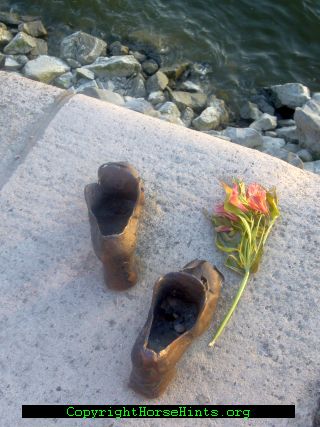  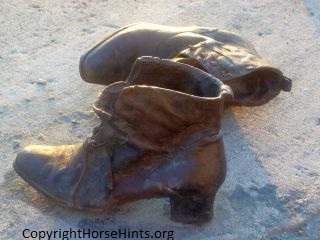 Day 8: Danube Bend Excursion. Embarked on a morning excursion to the scenic Hungarian countryside. Voyage to the charming artist's town of Szentendre, Day 9: Budapest/Vienna (Austria). Crossed the border into Austria and drive to splendid Vienna, the center of the Hapsburg Empire. Day 10: Today we skipped the magnificent Schönbrunn Palace, We toured Vienna Woods passing the Liechtenstein Castle. We visited the Abbey of Heilgenkreuxz 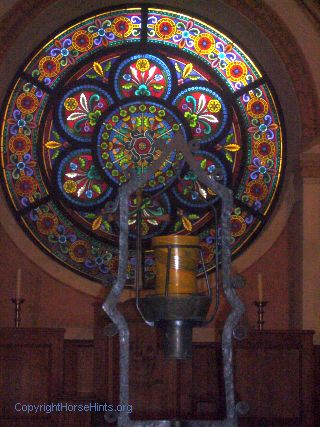 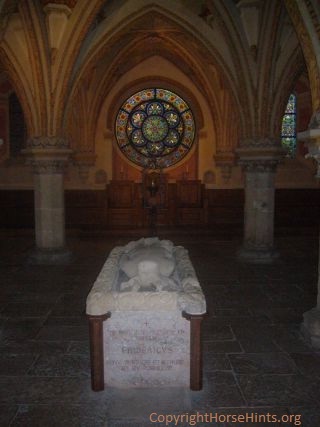 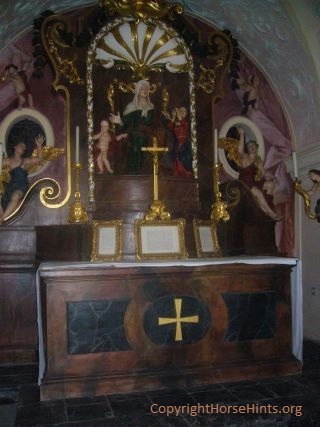  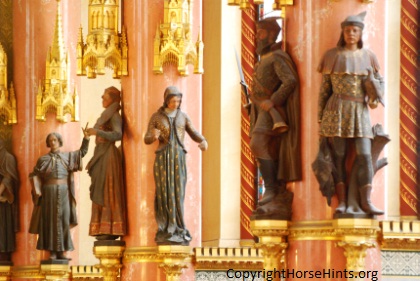  "In 1802 an institute for philosophical and theological studies was established, which became a Hochschule in 1976. It is now one of the largest faculties for the education of priests in the German-speaking world. In January 2007, Pope Benedict XVI raised the Hochschule to the status of Pontifical Athanaeum, which means the institution may now grant degrees according to Roman university privileges, instead of in the name of other Austrian universities. Presently, over 80 monks belong to the monastic community, the focus of which is the liturgy and Gregorian chant in Latin. Some of the monks also have pastoral duties in the 17 parishes for which the abbey is responsible or serve as professors at the Philosophisch-Theologische Hochschule. Others serve in caring for the upkeep of the historic abbey. Heiligenkreuz is also home to the Priesterseminar Leopoldinum (formerly Collegium Rudolphinum), a seminary for men in preparation for the priesthood. Stift Heiligenkreuz is known today as one of the most vibrant monasteries in central Europe; the current abbot is a member of the Ratzinger Schülerkreis; one of the monks is the Procurator General of the Order, working in Rome. Many other monasteries send their junior monks to Heiligenkreuz for theological and monastic training. It was one of the first abbeys to realize the value of the internet apostolate, maintaining a frequently updated homepage and several groups on Facebook as well as various blogs such as The Monastic Channel. Pope Benedict XVI visited the abbey during his trip to Austria in September 2007." Day 11: Vienna/Prague (Czech Republic). Journeyed across the Czech border through rich farmlands to Moravia The world-famous Spanish Riding School uses highly trained Lipizzan stallions in public performances that demonstrate classical dressage movements and training. In 1572 the first Spanish Riding Hall was built, during the Austrian Empire, and is the oldest of its kind in the world. The Spanish Riding School, though located in Vienna, Austria, takes its name from the original Spanish heritage of its horses. In 1729 Charles VI commissioned the building of the Winter Riding School in Vienna and in 1735, the building was completed that remains the home of the Spanish Riding School 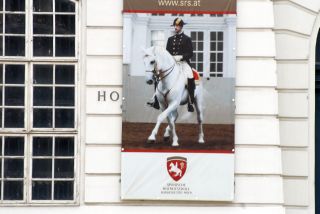 Day 12: The beautiful city of Prague Day 13: Bill and I took a Segway Tour all around  Bill (left) and our Segway guide, Tom (right). He was just terrific! "In the Cihelna Street in Mala Strana in a little square in front of Kafka Museum, you can find a very extraordinary statue. These statues were created by famous Czech artist and sculptor David Cerny. Statues represent two bronze sculptures (clearly both male) peeing into their oddly-shaped enclosure. However they are not just peeing, with the stream of water they write quotes from famous Prague residents. You can't see it from the photo but they move realistically by means of an electric mechanism driven by a couple of microprocessors swivels the upper part of the body, while the penis goes up and down. These statues became so popular among visitors that now you can send SMS message from mobile phone to a number, displayed next to the sculptures and the living statue then 'writes' the text of the message, before carrying on as before." Some Czech people will tell you that the statues represent the Czech Government pissing on the people. We all must keep a sense of humor! 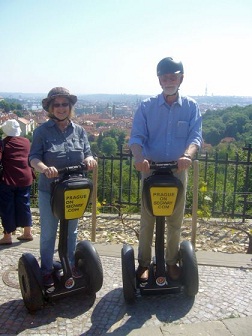 Bill and Debbie on Segways in Lesser Town  "...The original Palace was built in years 1623-1630 by Albrecht von Wallenstein, Duke of Mecklenburg (1583-1634), who made his name and fortune as the Commander-in-Chief of the Imperial forces in the Thirty Years War. Emperor Ferdinand II feared Albrecht of Wallenstein's calculating mind and had him assassinated in 1634 in the town of Cheb. He lived in the palace for only a year before his death. His widow sold it to his nephew and it remained in the Wallenstein family until 1945. After the Second World War, the palace became Czechoslovak state property and was renovated to house government offices. Today, the Senate of the Czech Republic operates out of the main palace buildings. The Riding School is used as a branch of the National Gallery in Prague. The challenging restoration of the main building began in mid-1999. The most valuable parts of this building in historical and artistic terms are the Main Hall, the Knights' Hall, the Antechamber, the Audience Hall and the Mythological and Astronomical Corridors..." 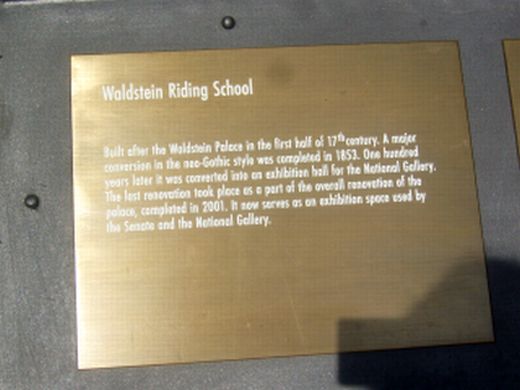  At Wallenstein 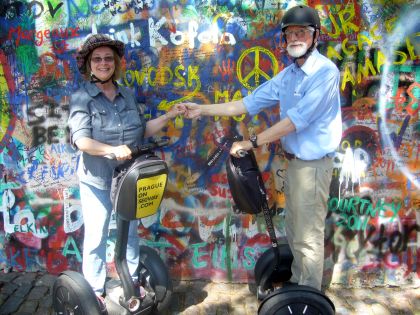  Paint all you want on the "Graffiti Wall" where it is legal to do so! 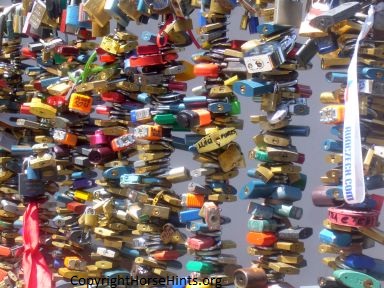 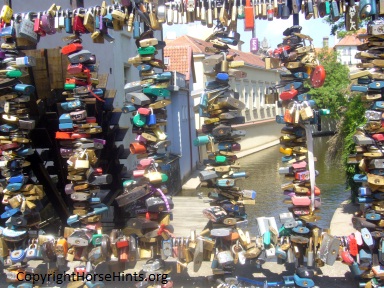 Love Padlocks Love padlocks are a custom by which sweethearts affix padlocks to a fence or similar public fixture to symbolize their love. They are most commonly placed on the railings of bridges. It is suggested that the custom of "locking a padlock and throwing away the key" probably originated in China. In Prague, love padlocks can be found in MaláStrana district on a small pedestrian bridge over a sidearm of the Vltava in front of a water wheel. The name of the adjacent street is Velkoprevorské námesti (Grand Priory Square). The location is just next to the John Lennon Wall. Day 14: Prague/Helsinki (Finland). Left Eastern Europe aboard a short flight to Helsinki, the charming capital of Finland, situated on the Baltic Sea. Scandic Hotel (Hotel Grand Marina) Hotel Grand Marina was generally a pit, however, it was well located. Kids were running through the halls in packs screaming and yelling, doing gymnastics in the halls and being unruly in every way imaginable. Sleep was difficult even with ear plugs! The management was unable to remedy the situation. I also want to add that an elderly couple travelling in our group were sitting in the lobby waiting to be taken to the airport when scammed by two scum. One passport, money and credit cards were snatched. Two men were working together. The management refused to call the police and told the couple they had to walk to the police station and report it themselves. The hotel also refused to hold the couple's bags in a lock up room. A number of eye witnesses told their account of what happened--all the same--the hotel could care less! Our guide, who was excellent, tried to work it out but was also unable to remedy the situation, apparently. The American Embassy was closed for the weekend and the couple could not leave the country with the group. Monday was the earliest that anything could be done. These things happen, however, the hotel's response was unacceptable. Why were these criminals working the lobby? Why would the hotel refuse to look at the security cameras so that the eye witnesses could identify the perpetrators? The witnesses wanted to identify the perpetrators before leaving for the airport. Simply, no one wanted to be bothered! My husband and I will avoid this hotel when returning to Finland.. Day 15: Helsinki/New York. Enjoyed the morning in Helsinki |